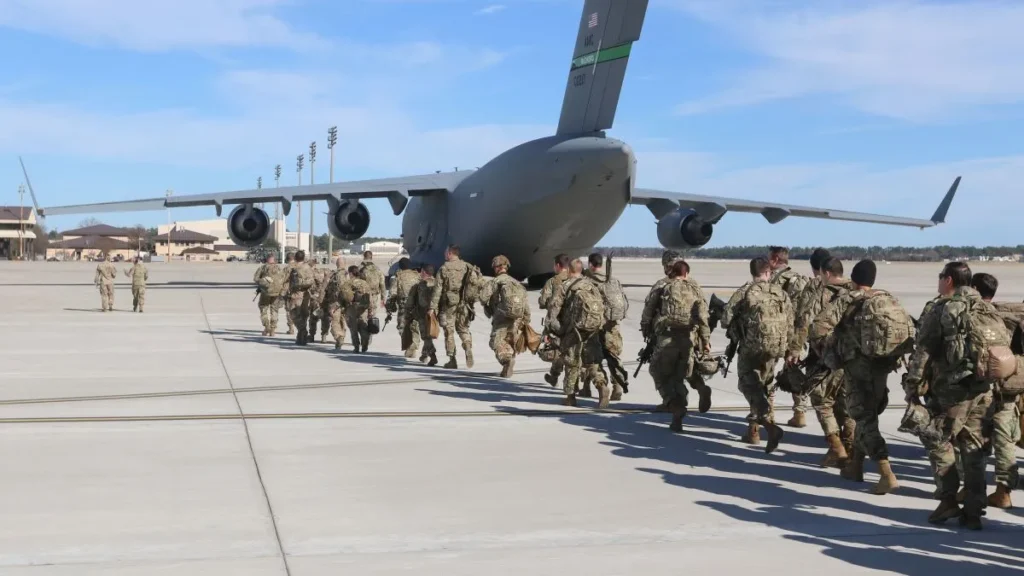The U.S. military is sending more troops to the Middle East in response to escalating violence between Israel and Hezbollah, raising fears of a broader regional conflict. The Pentagon announced the move on Monday, though details on the number of troops and their specific missions remain undisclosed. Currently, the U.S. has around 40,000 personnel stationed in the region.

As part of the increased military presence, the USS Harry S. Truman, along with two destroyers and a cruiser, departed Norfolk, Virginia, heading for the Mediterranean on a scheduled mission. This deployment suggests that the U.S. may keep both the Truman and the USS Abraham Lincoln, which is already stationed near the Gulf of Oman, within striking distance in case tensions worsen.
Maj. Gen. Pat Ryder, Pentagon press secretary, shared a limited update on the situation, stating, “In light of increased tension in the Middle East and out of an abundance of caution, we are sending a small number of additional U.S. military personnel forward to augment our forces that are already in the region. But for operational security reasons, I’m not going to comment on or provide specifics.”
The decision comes after recent Israeli airstrikes on Lebanon, which have resulted in hundreds of casualties. Israel has indicated plans for further military operations, with Prime Minister Benjamin Netanyahu issuing a warning to Lebanese civilians, urging them to evacuate areas targeted by Israeli forces. Netanyahu’s message coincided with ongoing airstrikes against Hezbollah in southern and eastern Lebanon.
In light of the escalating conflict, the U.S. State Department issued an urgent advisory for American citizens to leave Lebanon. “Due to the unpredictable nature of ongoing conflict between Hezbollah and Israel and recent explosions throughout Lebanon, including Beirut, the U.S. Embassy urges U.S. citizens to depart Lebanon while commercial options still remain available,” the statement read.
While the Pentagon has not confirmed whether the additional U.S. forces will assist with a potential evacuation of American citizens, concerns are growing about the volatile situation. Maj. Gen. Ryder refrained from offering specifics on the matter, but the possibility remains as the conflict escalates.
Over the weekend, U.S. Defense Secretary Lloyd Austin spoke directly with Israeli Defense Minister Yoav Gallant, urging efforts to de-escalate the situation. However, as of Monday, there were no clear signs of a ceasefire. Ryder emphasized the gravity of the situation, stating, “Given the tensions, given the escalation, as I highlighted, there is the potential for a wider regional conflict. I don’t think we’re there yet, but it’s a dangerous situation.”
The U.S. military presence in the Middle East serves dual purposes: safeguarding Israel and protecting U.S. personnel and assets stationed throughout the region. The Navy has warships positioned from the Mediterranean Sea to the Gulf of Oman, while Air Force and Navy fighter jets are stationed at key strategic locations, prepared to respond swiftly to any threats or attacks.
As the violence continues to escalate, the international community watches closely, hoping for a resolution that will prevent further devastation.




GIPHY App Key not set. Please check settings